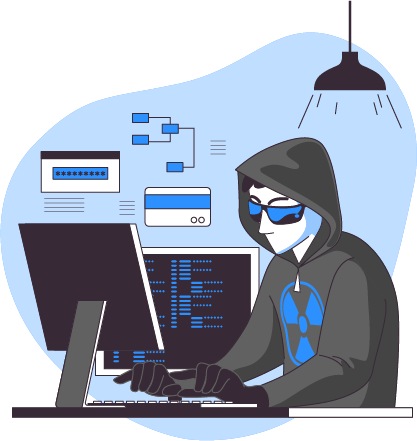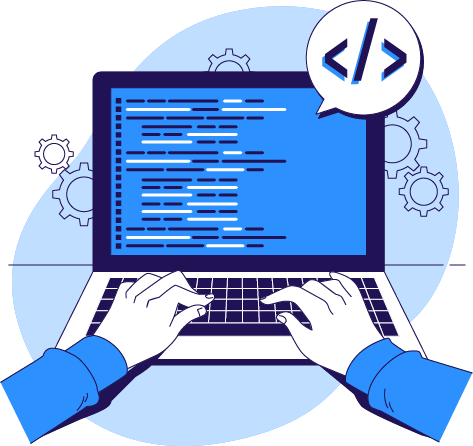IT-Security Made In GerMany
Your Continuous Penetration Testing Partner!
We continuously map, monitor, and test your external attack surface — just like a real attacker would. Our platform combines automated external asset discovery with manual testing.

Continuous Penetration Testing
We’ll provide you with an advanced external attack surface management solution that is fully managed. Plus we’ll mix in expert-level hands-on exploitation.
No Setup Time — Instant Results
You don’t need to install anything, but just give us your known asset inventory, and we’ll hack it — identifying vulnerabilities before the bad actors do.
Full Coverage & Always-On
Shadow IT, third-party risks, forgotten assets—we uncover and secure everything attackers target. We’ve got your assets protected around the clock—24/7 coverage, no exceptions. Including your mobile apps.


The Smooth Part.
Once we’ve got all your digital assets, we start continuously monitoring your assets for security vulnerabilities. All discovered vulnerabilities are evaluated by our certified security analysts to save you more time focusing on your business. You will never get an unverified report!
Actionable Insights, Not Just Alerts
If we detect a vulnerability, we won’t wait — you’ll hear from us immediately. Forget about endless pages filled with false positives you have to go through manually. You’ll only get verified, realistically exploitable and as such, actionable findings.
Documentation
You’ll receive a detailed report outlining identified vulnerabilities along with clear, actionable steps to remediate them. We’ll even coordinate vulnerabilities with affected 3rd-party vendors to ensure controllable remediation.
Additional Benefits!
We understand that the security of your data is important, which is why we store every single byte in German datacentres.
Data Stored Exclusively in Europe
We take GDPR compliance seriously, ensuring your data stays exactly where it belongs—securely within European datacentres. With us, your information will always stay within the Europe, giving you complete peace of mind while staying 100% within the GDPR framework.
Small Businesses Incentive
Cyber threats aren’t just a big-business problem—small businesses are a prime target for hackers. But staying secure doesn’t have to be complicated or expensive. If you are a small business, we’ll also handle remediation processes at no extra cost, so you don’t need a security specialist at all.

What we have to offer
Affordable for any budget.
Continuous Penetration Testing
We continuously monitor your attack surface and notify you of any vulnerabilities discovered.
Penetration Tests
We also perform classic penetration tests against almost any of your assets: web apps and APIs, IoT devices or thick client apps.
Source Code Reviews
We also perform source code reviews of applications written in Java, .NET, PHP, Python, or JavaScript.
Bug Bounty and VDP Services
Do you want to run a bug bounty or vulnerability disclosure program? With more than 10 years of experience, we have you covered!
Small Business Packages
You run a small business, care about security, but have no budget for dedicated security personnel? We’re here for you, let’s talk.
Latest News
Discover our newest blog posts.
Exploiting A Pre-Auth RCE in W3 Total Cache For WordPress (CVE-2025-9501)
We recently came across a very brief vulnerability announcement made by WPScan about CVE-2025-9501, which is described as an “Unauthenticated Command Injection” in the quite famous W3 Total Cache plugin for WordPress. This immediately caught our attention because with 1+ million active installations, it is one of the more wide-spread plugins, which we’ve also encountered numerous times in our customer pentests. Since we didn’t believe that it was so easy to exploit, we decided to take WPScan’s one-liner advisory, analysed the plugin’s cache parsing, and build an exploit for it. Kudos to the original researcher “wcraft” who submitted this bug to WPScan.
HashiCorp Consul <= 1.21.5 Event Denial of Service (CVE-2025-11375)
ADVISORY INFORMATION Product: HashiCorp ConsulVendor URL: https://developer.hashicorp.com/consulCWE: Memory Allocation with Excessive Size Value [CWE-789]Date found: 2025-09-19Date published: 2025-11-02CVSSv4 Score: 7.1...
HashiCorp Consul <= 1.21.5 KVS Denial of Service (CVE-2025-11374)
ADVISORY INFORMATION Product: HashiCorp ConsulVendor URL: https://developer.hashicorp.com/consulCWE: Memory Allocation with Excessive Size Value [CWE-789]Date found: 2025-09-19Date published: 2025-11-02CVSSv4 Score: 7.1...

